Pair of High-Definition 2-way 5.25 inch Near Field Studio Monitors
Item # 67154
Retail Price
$399
Sale Price!
$249.00
Buy Today and Save $150.00 (38% from Retail)
We're sorry, this product is no longer available.
When you're ready to get serious about recording, it's time to step up to PreSonus Eris-series studio monitors. Cheap computer speakers and home-stereo speakers won't reveal the truth about your mix. They aren't designed for that.
In contrast, Eris speakers are real studio monitors, delivering a very accurate response with a tight bass and very clear upper end. That's what you need in a home studio. Thanks to well-designed Kevlar® low frequency transducers, low-mass silk-dome tweeters, responsive Class AB amplification, and professional acoustic-adjustment controls, Eris delivers the goods.
Yet Eris-series speakers are ultra-affordable, making them a terrific value. And with two models, you can easily find the Eris monitor that best suits your studio needs.
When Size Matters
If space is at a premium, or if you want the ultimate in portability, consider the compact Eris E5, which takes up just 7 x 10.24 x 7.68 inches (178 x 260 x 195 mm) and weighs in at just 10.2 lbs (4.63 kg). You can shoehorn this little beauty into almost any studio space.
The E5 sports a 5.25-inch, Kevlar low-frequency driver, mated with a 45W, Class AB amplifier; and a 1-inch (25 mm), silk-dome tweeter powered by a 35W, Class AB amplifier. It can crank out a clean 102 dB SPL, peak. Frequency response is rated at 53 Hz to 22 kHz. For a studio monitor in its size and price class, that's impressive.
For an extended low-frequency response and a bit more muscle, step up to the Eris E8. With its 8-inch, Kevlar low-frequency transducer, driven by a 75 watt, Class AB power amplifier, it can range down to 35 Hz. Like the E5, the E8 can reach all the way to 22 kHz, thanks to a 1.25-inch (32 mm), silk-dome, high-frequency tweeter. However, the E8's tweeter is driven by a heftier 65W, Class AB amplifier. With its extra juice, the E8 can deliver up to 105 dB SPL, peak.
All Eris speakers have front-ported enclosures made of vinyl-laminated, medium-density fiberboard (MDF).
Gazintas
Both Eris models provide balanced XLR, balanced ¼" TRS, and unbalanced RCA line-level inputs. When both balanced connections are in use, the TRS input will supersede the XLR input. The RCA input is summed into the signal path.
With this selection, you'll have no problem hooking your Eris speakers up with virtually any line-level source. (If your signal source has unbalanced, ¼" TS outputs, simply use a ¼"-to-RCA adapter or adapter cable.)
You're in control!
Today's music producers deal with a wide variety of musical genres and often work in more than one location. It's easy to take your Eris speakers with you when you want to work in a different space. It's almost as easy to customize their sound for your room and type of music.
The most basic control is the Input Gain, which determines the signal level before it reaches the power amp. This is part of gain-staging your overall system—that is, setting the levels for every part of the recording chain in order to get the optimal level of clean audio all the way through. Once you've gain-staged your system, you can leave this control alone.
The Eris E5/E8 provides three EQ controls in its Acoustic Tuning section: High, Mid, and Low Cutoff. These controls enable you to fine-tune the monitors and even to broadly approximate the sounds of different types of speakers so you can hear what your mix might sound like, for instance, on a car stereo or portable radio. The Low control also is useful when using the E5 or E8 with a subwoofer.
In addition to the Acoustic Tuning controls, Eris speakers offer a three-position Acoustic Space switch. This switch controls a second-order, low shelving filter that cuts the level of all frequencies below 800 Hz by a specified amount (-2 or -4 dB) to compensate for the boundary bass boost that occurs when the monitor is placed near a wall or corner. If you don't want to roll of those lows, set it to 0 dB.
This combination of controls lets you create a linear response for accurate monitoring and enables you to simulate different listening environments, so you don't have to listen to mixes on your car, consumer computer speakers, and home stereo to check how the music sounds with different systems. Instead, you can adjust the Eris monitors' response and test your mixes without leaving your studio. No other monitors in this price class offer this degree of control.
Safety Matters
Any loudspeaker is subject to an assortment of environmental and performance problems, and Eris monitors offer protection from most common of these. RF shielding protects against radio frequencies that could be induced into the signal and become audible. (If you've ever heard a radio broadcast unexpectedly coming out of a guitar amp, that's the result of RF interference.)
Eris monitors also provide over-temperature protection to avoid heat-related issues, current-output limiting (to prevent damage should there be a short circuit on the speaker terminals), and subsonic protection to filter out extremely low-frequency vibrations that could interfere with the woofer's performance.
Finally, Eris' power amplifiers have a "soft startup" so that you don't get damaging pops in the speakers when you power them up.
Sound Thinking
By now, it should be clear that Eris-series speakers deliver a lot more than you would expect from a budget-priced studio monitors. As you expect from PreSonus, they use quality components, are well constructed, and deliver professional audio quality. They're lightweight and compact and look as professional as they sound.
But what really sets them apart from comparably priced systems are user controls that allow you to tailor the speakers' response to your needs.
0 0
MPN: ERIS E5
UPC: 008474926499
- 5.25-inch (E5) / 8-inch (E8) Kevlar® low-frequency transducer
- 1-inch (25 mm), ultra-low-mass, silk-dome, high-frequency transducer
- 70 (E5) /130 watt (E8), Class AB biamplification
- Front-firing acoustic port for superior bass-frequency reproduction
- Midrange (±6 dB, continuously variable), HF (±6 dB, continuously variable), High-Pass (Off, 80 Hz, 100 Hz) and Acoustic Space settings (flat, -2, -4 dB) for accurate mixing contour
- RF interference, output current limiting, over-temperature, transient, and subsonic protection
- Optimized, resonance-suppressing internal bracing
- Balanced XLR/¼-inch and unbalanced RCA inputs
- 102 dB (E5) /105 dB (E8) maximum continuous SPL
Dimensions - Width: 7 inches each
- Depth: 7.68 inches each
- Height: 10.24 inches each
- Weight: 10.2 lbs each
Related Gear
-
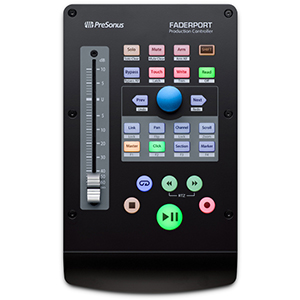
Presonus FaderPort
Item # 78029
Description
$169.99 View Details
Single Fader USB DAW Control Surface -
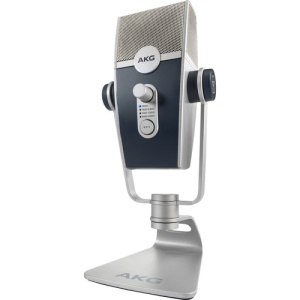
Akg Lyra
Item # 80523
Description
$79.00 View Details
Ultra-HD Multi-Mode USB Microphone -
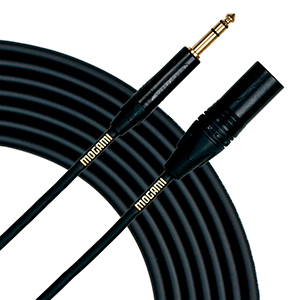
Mogami Gold TRS-XLRM - 10 Foot
Item # 21981
Description
$67.95 View Details
Balanced Quad Patch Cable 10 feet -
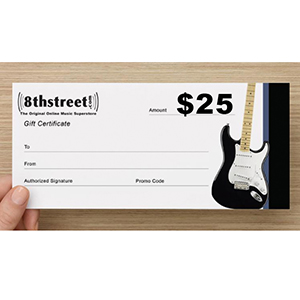
8th Street Music $25 Gift Certificate
Item # g25
Description
$25.00 View Details
Gift Certificate (may be purchased in multiple amounts) -

Hosa HSS-010 10 Ft.
Item # 66326
Description
$15.95 View Details
1/4 inch TRS Pro Balanced Interconnect Cable 10 feet
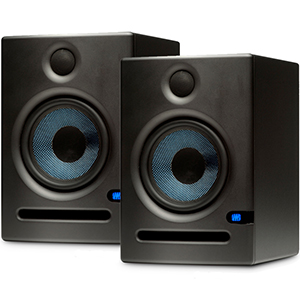 Pair of High-Definition 2-way 5.25 inch Near Field Studio Monitors
MPN #: ERIS E5
UPC #: 008474926499
Regular price: $399
$249.0000
Available from:
8th Street Music
Condition: New
Out of Stock
Pair of High-Definition 2-way 5.25 inch Near Field Studio Monitors
MPN #: ERIS E5
UPC #: 008474926499
Regular price: $399
$249.0000
Available from:
8th Street Music
Condition: New
Out of Stock








